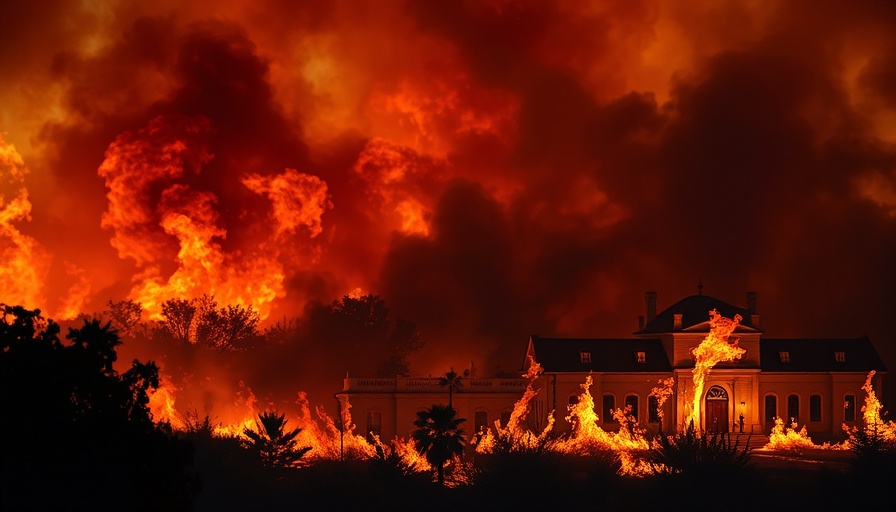
Understanding the Water Crisis: Trump's Claims and Reality
The prospect of transporting water from the Pacific Northwest to Southern California has stirred quite a debate, especially following recent remarks from former President Donald Trump. His seemingly casual suggestion that water could be taken from the rainy Northwest and sent down to drought-stricken California raises significant questions. Experts unanimously conclude: it's simply not feasible. The geographical, legal, and environmental complexities involved render such a notion not just impractical, but impossible.
Water Infrastructure: The Link that Doesn't Exist
Firstly, a major challenge lies in the lack of existing infrastructure. Currently, there are no pipelines or aqueducts that connect these two regions in a way that would make such a massive water transfer possible. Ria Berns, with the Washington State Department of Ecology, emphasizes, “There is no existing conveyance.” The construction of infrastructure capable of such a venture would involve astronomical costs and years, if not decades, to complete. Historical attempts to connect distant water sources, such as the Central Arizona Project, highlight how complex and controversial such endeavors can be.
The Current Water Landscape: A Tale of Two States
Moreover, the Pacific Northwest, particularly Washington State, is experiencing its own water shortages. While many regions saw rainfall recently, the area continues to deal with a snow drought that has prompted emergency declarations. Washington's water managers are already in a precarious situation, having to prioritize local needs over any external demands. As environmental law professor Daniel Rohlf pointedly remarks, “Washington water is for Washingtonians,” underscoring the legal and ethical implications of diverting this critical resource.
Legal Hurdles: Water Rights Overshadow Proposals
The legal landscape surrounding water rights further complicates Trump's proposition. Longstanding water rights in the West date back over a century, creating a tangle of regulations that protect local interests. Any attempt to extract water for use elsewhere would violate these rights, leading to a multitude of legal challenges. Even if water were available, the legal framework would make it difficult to redistribute it.
Historical Context: Unsung Proposals and Failed Projects
Historically, proposals to transfer water from the Northwest to other parts of the country have frequently surfaced—only to be shot down due to cost, environmental concerns, or lack of consensus among involved states. Trump's remarks are just the latest reiteration of an idea that has been deemed too complex and politically fraught to consider. Previous projects, dating back as far as the 1940s, share a common fate of rejection.
Public Sentiment: No Support for Trump’s Proposition
Importantly, the lack of support for such a transfer exists not only from environmentalists and specialists but also from local governments. No officials from Washington, Oregon, or California advocate for such a proposal, a point made clear by Rohlf. The priority for these states remains local solutions: conservation efforts and improving existing water management systems rather than searching for external sources.
Alternative Solutions: Emphasizing Local Resources
Experts agree that fostering local solutions would be more productive than contemplating impractical projects. In the face of ongoing climate changes, it becomes essential for states to enhance their water conservancy efforts and focus on creating new reservoirs as means to tackle shortages. These strategies could provide effective, sustainable paths to solving long-standing water issues in these multidimensional landscapes.
The Bigger Picture: Climate Change's Role
Lastly, the debate surrounding water access in the Pacific Northwest and its historical ties to climate change is crucial to understanding water scarcity in the West. With projections indicating a snow drought could affect Washington's winters for the foreseeable future, the regional climate narrative plays a critical role in shaping the future of water availability. Addressing the repercussions of climate change must be prioritized on the government agenda to secure all areas' water needs locally.
Trump’s statements may generate buzz but do little to resolve the very real water issues that millions face. It’s crucial for citizens and policymakers to engage in discussions grounded in the realities of water management rather than hypothetical propositions.
 Add Row
Add Row  Add
Add 




Write A Comment